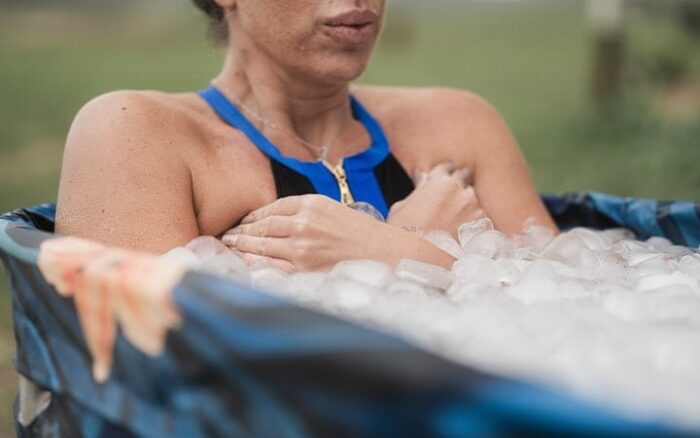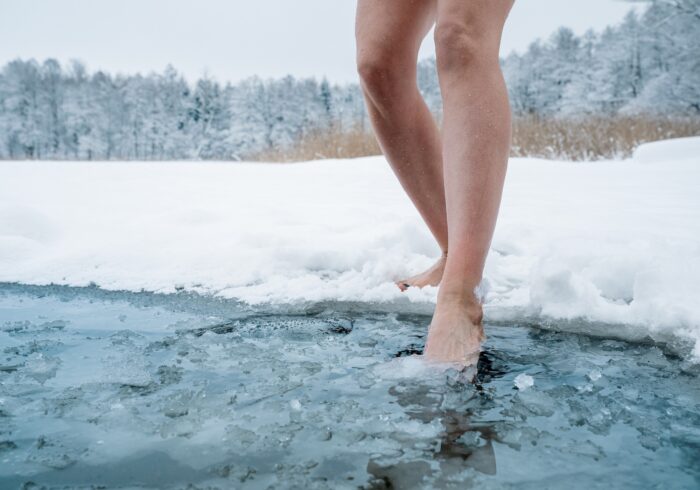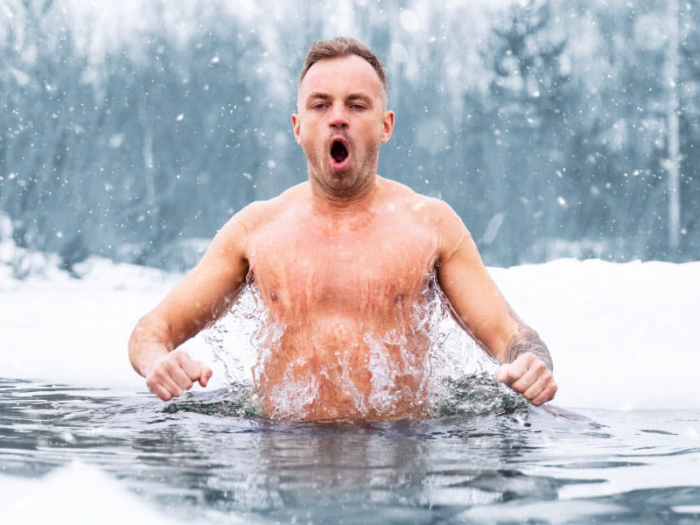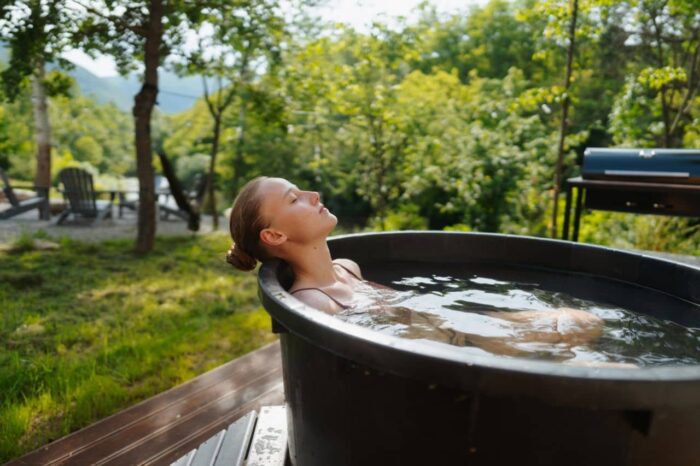
Cold water therapy has exploded in popularity for one reason—it works. From mental clarity to inflammation control, more people are stepping into ice-cold water with a clear goal: to feel stronger, calmer, and more energized.
But here’s the truth most skip—doing it right matters. You can’t just fill a tub with ice and expect your body to love it.
If you’re thinking about trying your first cold plunge, or maybe you’ve tested the waters and backed out, this guide breaks it down in a real way. No fluff. No hype. Just straight-up facts and a plan you can trust.
Key Highlights
- Cold plunges build resilience and strengthen your immune system.
- Beginners should limit exposure to under three minutes.
- The ideal water temperature for results is between 50°F and 59°F.
- Controlled breathing can prevent shock and help you stay calm.
- Wellness spas offer structured environments for first-timers.
- Consistency, not duration, creates the biggest long-term impact.
What Cold Water Does to Your Body (and Why It’s Worth It)

When you drop your body into cold water, something primal kicks in. Your blood vessels clamp down. Your heart beats faster. Your brain hits a survival mode. But here’s the magic: your body starts adapting in seconds. It learns how to handle discomfort. It builds resistance to stress.
You’re not just cooling off your muscles. You’re training your nervous system. Your immune response improves. Circulation speeds up. Hormones like norepinephrine and dopamine flood your system, boosting your alertness and overall mood.
Cold plunges also stimulate brown fat, which burns energy to create heat. That can help your metabolism work harder without you lifting a finger. That’s why even a few minutes can change how you feel the rest of the day.
The benefits aren’t short-term. Over time, people report:
- Reduced anxiety
- Fewer colds and infections
- Faster recovery after workouts
- Better sleep quality
- Improved skin tone and circulation
You don’t need long sessions. You need consistency, presence, and the right setup.
What You Must Know Before Your First Cold Plunge
Your first plunge can go two ways. It can be a controlled, empowering experience—or it can feel like a mistake you never want to repeat. That depends on how you prepare.
How Long Should You Stay In?
For beginners, two minutes is the sweet spot. That’s enough to feel the benefits without triggering a stress overload. Ignore what you see on social media—longer isn’t better at the start.
Start with short exposures and increase by 15–30 seconds every few sessions. Always listen to your body. If your breath feels out of control or you start shivering too hard, get out.
What’s the Right Temperature?
The cold has to be cold. But not painful. Aim for 50°F to 59°F (10°C to 15°C). Below 50°F is not necessary for results and increases the risk of panic or numbness. Use a thermometer if you’re doing it at home.
Temperatures above 60°F feel uncomfortable but won’t trigger the same physiological response. The shock is part of the process, but it has to be a manageable shock.
How to Take a Cold Plunge Step-by-Step

Let’s walk through exactly what to do. Whether you’re at home or a spa, these steps help you stay in control and actually enjoy the process.
1. Set Up Your Space
At home, use a tub, barrel, or large container. Fill it with cold water and add ice. Use a pool thermometer to check the temperature. You want it between 50°F and 59°F.
Keep a towel and robe nearby. Avoid cold air drafts after your session. Your body needs to warm up naturally, not shiver uncontrollably.
2. Focus on Breathing First
Before stepping in, breathe slowly. Inhale through your nose for 4 seconds. Exhale through your mouth for 6 seconds. Do this for a full minute before entering.
Once in the water, keep that rhythm. Your body will scream to hyperventilate. Ignore it. Slow breathing helps override the panic reflex.
3. Enter Gradually

Don’t jump. Step in slowly. Let the water rise over your ankles, then knees, then hips. Lower yourself in one controlled motion once your legs feel adjusted.
Avoid splashing or moving around. Stillness helps reduce the sensation of cold.
4. Keep Your Mind Engaged
Stare at one fixed point. Repeat a calming phrase if it helps. “I’m safe. I’m strong. I’m in control.” Keep your focus internal. That’s how you take control of discomfort.
Start a timer. Watch the clock, but don’t obsess. Aim for 1–2 minutes. You can always increase time later.
5. Get Out Smoothly and Warm Up
Once your time is up, step out slowly. Dry off with a towel. Move around or walk gently to stimulate blood flow. Avoid hot showers immediately. Let your body reheat itself through movement and room temperature.
You’ll feel your skin flush and a rush of alertness hit you like caffeine. That’s the sign your body is kicking into recovery mode.
The Science That Makes Cold Plunges Worth It
Cold water triggers vasoconstriction—your blood vessels tighten and blood shifts to protect core organs. After exiting, the opposite happens. Your vessels expand and oxygen-rich blood floods back into your limbs.
That cycle:
- Flushes waste
- Speeds up muscle recovery
- Reduces inflammation
- Improves circulation
It also boosts mental performance. One study found that cold exposure increases norepinephrine by 200%. That sharpens focus and improves mood. Another study found cold water immersion improves sleep and stress resilience by balancing the nervous system.
The data is clear: the body thrives when it learns to regulate after controlled stress.
Top Mistakes to Avoid

Getting it wrong can make cold plunges miserable—or worse, dangerous. Avoid these beginner mistakes:
- Too long, too fast: More than 3 minutes can trigger a strong stress response.
- Wrong temperature: Anything below 45°F is too harsh for a beginner.
- Shocking the body without breathing control
- Doing it without someone nearby the first time
- Skipping the recovery phase: Post-plunge warming matters just as much.
If you ever feel dizzy, nauseous, or disoriented—end the session immediately.
Building a Cold Plunge Routine That Works
Think of cold plunges as mental training as much as physical recovery. The effects build over time, and the key is staying consistent.
You don’t need daily plunges to benefit. 3–5 sessions per week deliver strong results. Aim for the same time of day to help the nervous system build a rhythm.
Many people prefer:
- Morning plunges to jumpstart energy and mood.
- Post-workout plunges to speed up recovery.
- Evening plunges to release tension and sleep deeper.
Mix cold therapy with other wellness habits like sauna use, breathwork, journaling, and hydration. Cold plunges become even more powerful when combined with recovery and mindfulness.
Final Takeaway

Cold plunges are hard. That’s the point. But they’re also simple. You don’t need to be an athlete or a wellness guru to benefit. You need a plan, a safe setup, and the right mindset.
Start small. Breathe through the shock. Trust the process. It’s not about forcing your body—it’s about training it. The resilience you build in cold water shows up everywhere else in life.
Want structure and support for your first plunge? Book a cold plunge and experience guided recovery in a setting built for total wellness.
Let the water challenge you. Then rise out stronger.














